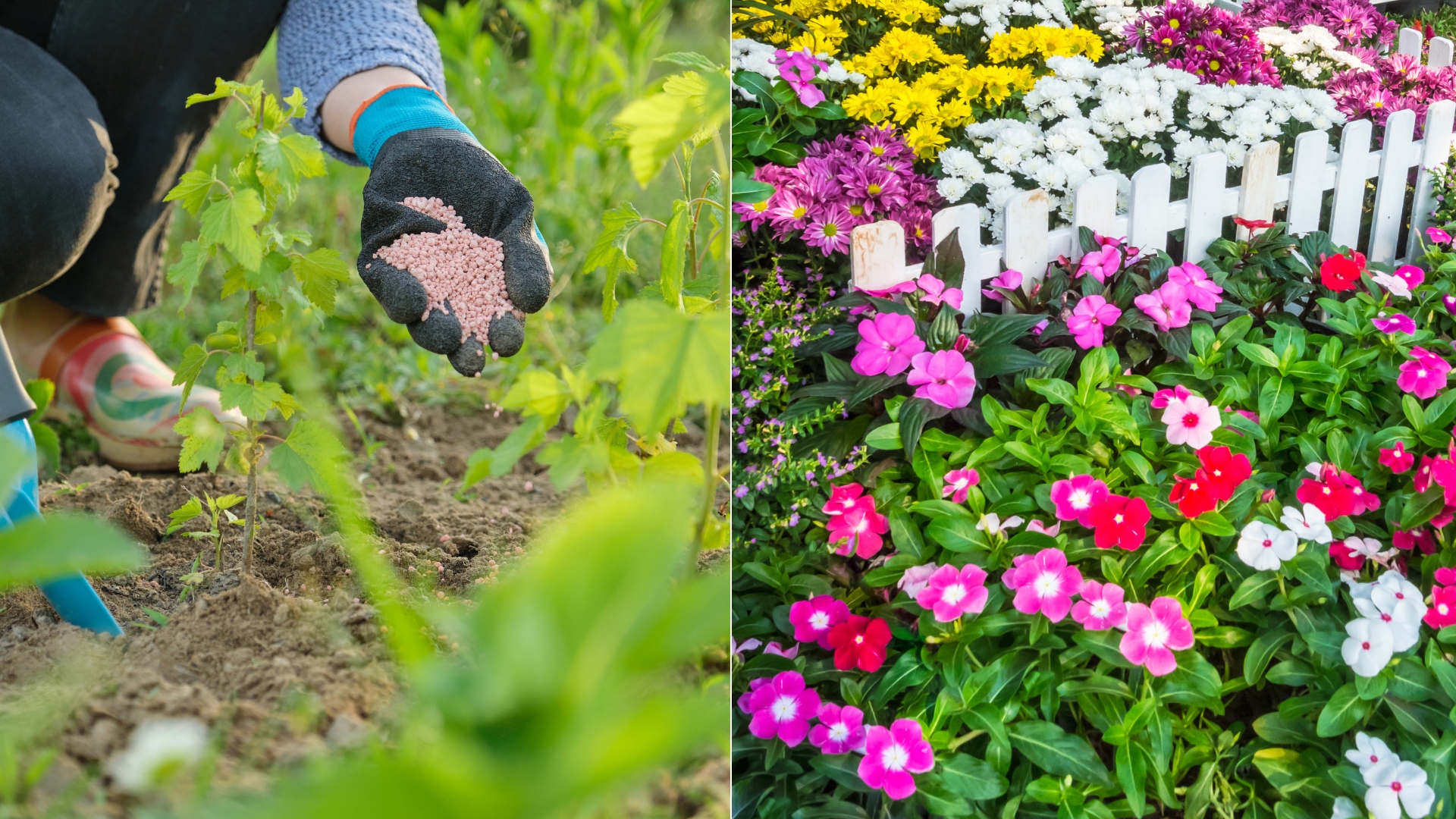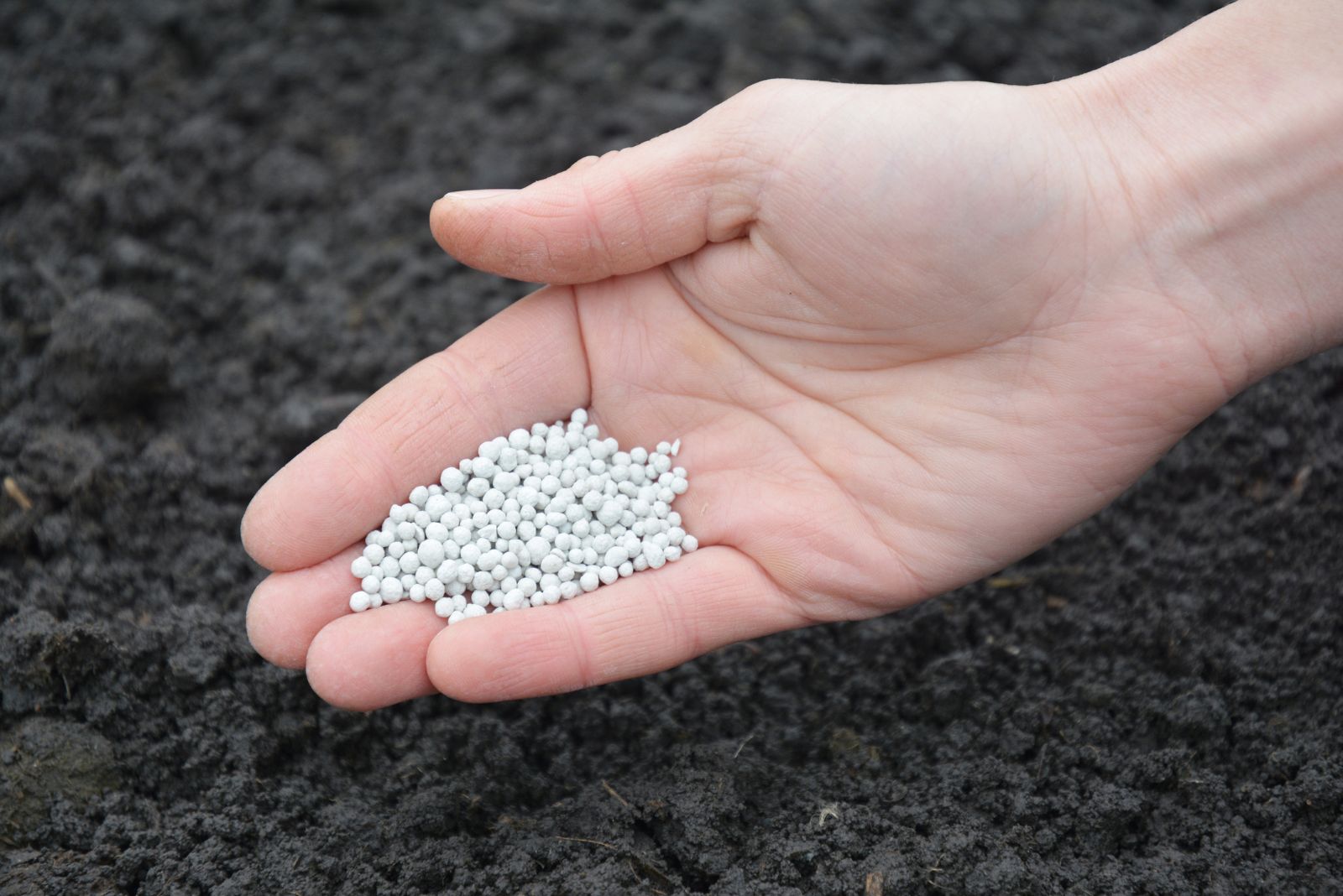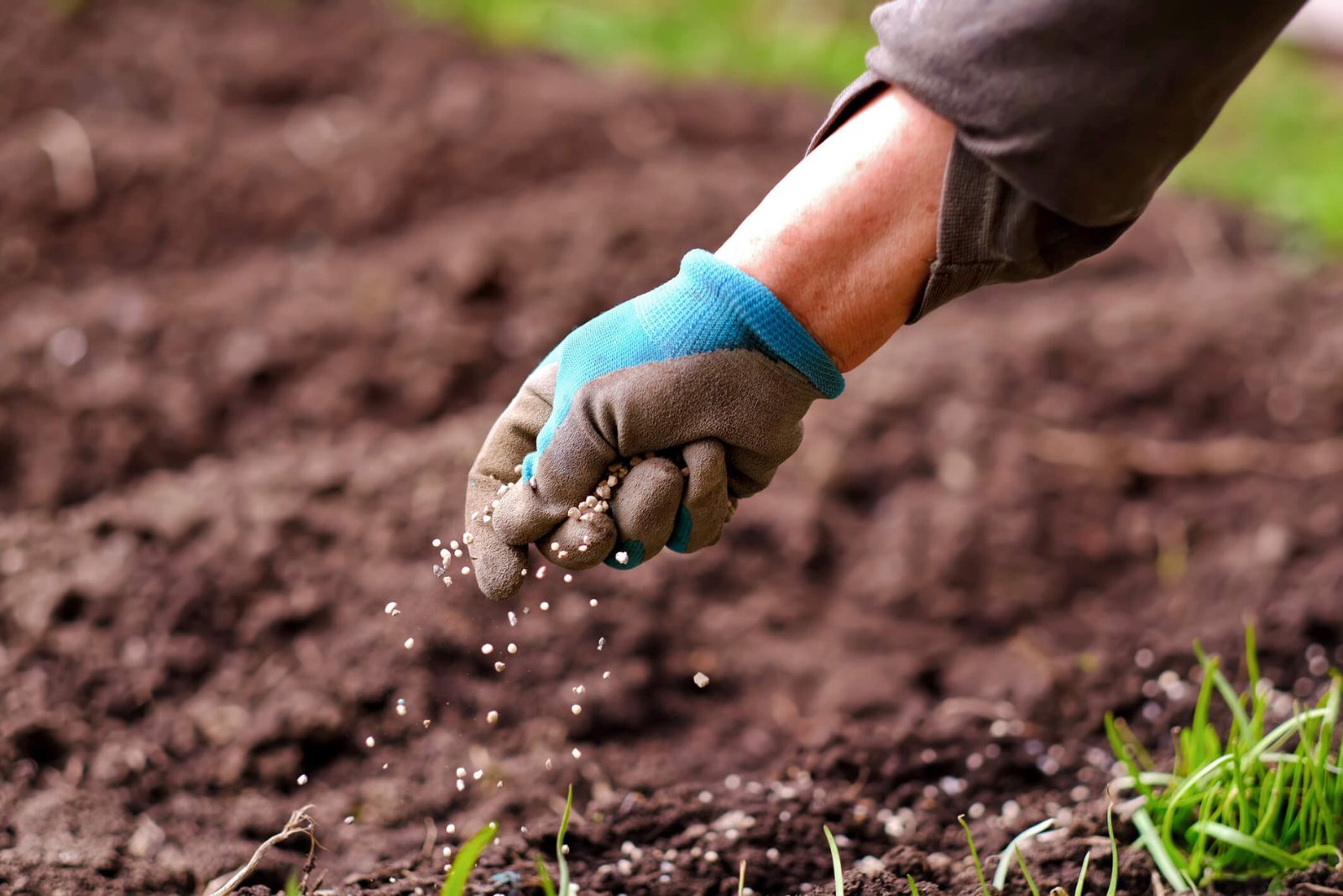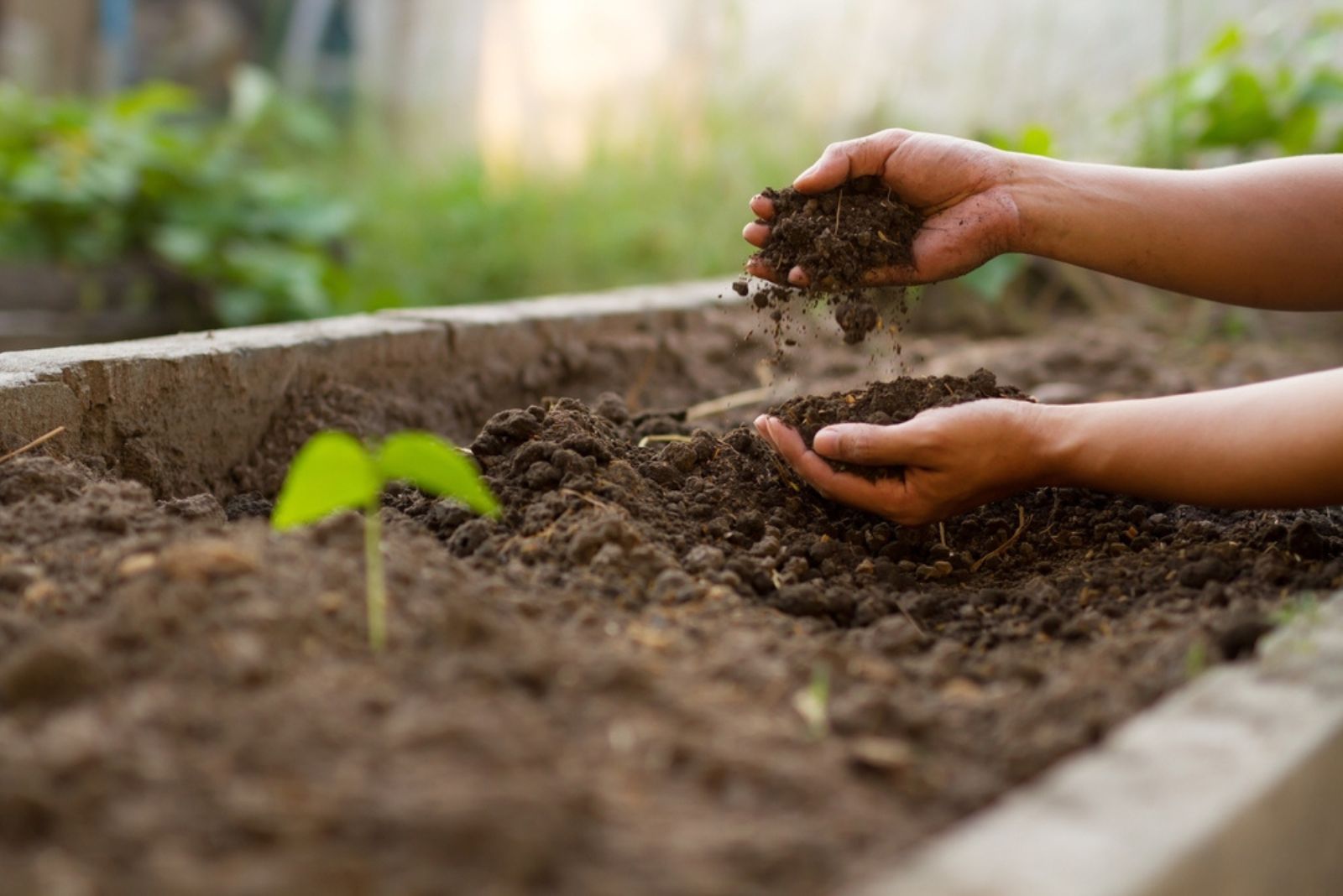Phosphorus is incredibly important for flowering, fruiting, and developing root systems, which is why you have to make sure your soil has enough of it.
Most garden soils, with the exception of sandy substrates, usually have plenty of this nutrient, so you won’t have to do anything extra for your plants.
Potting mixes also come with more than enough phosphorus to support proper plant growth, and most fertilizers contain this nutrient.
However, your plants can deplete the soil of this nutrient, which is why you’ll have to apply it in greater quantities to support proper plant growth.
Here is everything you need to to know about why, when, and how to apply phosphorus, as well as some other useful info.
Let’s get started!
Where Does it Come From?
Nearly all the phosphorus that we use today comes from a few sources of phosphate rock found in China, the US, and Morocco. These stocks will soon run out, but there are other deposits, although they contain smaller amounts of this nutrient, which makes it more expensive. (1)
Luckily, there is plenty of phosphorus in the soil due to constant fertilization, so it will take many years for the plants to use it all up.
On the other hand, we also have a good amount of phosphorus in animal manures and bone meal, so it isn’t likely that the plants will be completely devoid of this nutrient.
There are many other homemade fertilizers that contain phosphorus, such as banana peel fertilizer.
Benefits Of Phosphorus
In addition to supporting flowering, fruiting, and root development, phosphorus has other functions within plants that are crucial for their growth.
• Phosphorus is found in every plant cell.
• It is important for energy transfer and is an energy source for various plant chemical reactions.
• The most important reaction (process) within plants is photosynthesis, and it wouldn’t be possible without phosphate energy.
• Phosphorus is also responsible for the transformation of sugar and starches as well as the movement of nutrients and minerals within the plant.
• This nutrient allows the transfer of genetic material from one plant generation to the next. (2)
Why Add Phosphorus?
All these benefits and features of phosphorus are what makes it so important in soil. Therefore, if you want your plants to thrive, make sure to include fertilizers that contain this nutrient.
Phosphorus deficiency will lead to slow, stunted, and spindly plant growth, reduced flower and fruiting, and poor harvest.
If you suspect any type of nutrient deficiency, it is best to do a soil test, but there are a couple of things you can look out for when it comes to a lack of phosphorus.
Signs Of Phosphorus Deficiency
The following symptoms may indicate phosphorus deficiency, but make sure to do a soil test afterwards just to be sure.
• Lack of shoot growth, but increased root growth.
• Foliage first becomes dark, blue-green, or even pale (if the deficiency is severe). It may develop red, violet-red, or purple discoloration.
• Early senescence of older leaves, or rather older foliage ages more quickly.
• Younger leaves appear healthy, but much smaller in size. (3)
Testing The Soil For Phosphorus Levels
Even though these symptoms are a sign of low phosphorus levels, they may indicate a number of other things, which makes it almost impossible to diagnose this issue.
That’s why you should test your soil if you notice that your plants have started to deteriorate.
It is one of the best ways to determine all nutrient levels in your substrate. Send a sample to the Soil Test Lab or a lab of your choice.
They use various tests, and some of the most common ones are the Bray-1 and Bray-2, Mehlich 3, and Olsen-P tests.
When To Add This Mineral
Phosphorus isn’t a fast-release mineral. It takes a fair amount of time to dissolve and enrich the soil before plants can uptake it. (4)
It’s best to apply it at least 1-2 weeks before planting, and the exact time depends on the product you use. Your best bet is to read the instructions on the package and follow them to a T.
How To Apply It
There are many phosphorus sources available if you need to enrich your soil, such as animal manures, high phosphorus fertilizers, blood meal, etc.
Here are your choices and the best ways to apply them.
Phosphorus-Rich Fertilizers
Applying high-phosphorus plant food is one of the surest and fastest ways to introduce more of this nutrient to your soil.
Simply choose a product with plenty of phosphorus (middle number of the NPK) and follow the manufacturer’s instructions.
You can choose a fast or slow-release product, depending on your preferences. Typically, phosphorus in this form will feed your plants for about 6 months or so, and you’ll have to reapply it if you want to have consistent growth and development.
You’ll have three options when it comes to phosphorus fertilizers: granules, liquids, and foliar sprays.
You spread the granules around your plant and then water them to ensure faster release, and dissolve the liquid then apply it directly to your green buddies.
Foliar sprays aren’t the best option because they typically cannot meet your plants’ phosphorus requirements, so I’d stay away from those.
Just make sure to follow the instructions and don’t apply too much phosphorus because it can hurt your plants or leach into the underground waters or surrounding area, contaminating the environment.
Rock Phosphate
Using rock phosphate (phosphorite) isn’t the most environmentally friendly way to introduce more phosphorus into your garden, but it definitely works.
Microbes found in your soil will convert this material into phosphorus your plants can absorb and use.
It comes in dry and liquid forms, but you have to be very careful when using it. It can leach excess phosphorus into the surrounding soil, causing overfertilization and environmental hazards.
Additionally, there’s no way to reduce the amount of phosphorus in your substrate, so make sure you don’t add too much. Excess phosphorus will reduce the plant’s ability to absorb other nutrients and minerals.
Well-Rotted Manure
All animal manures contain decent amounts of phosphorus, although chicken and rabbit manures contain it in the highest concentrations.
Spread the manure over the soil in fall and let it leach the nutrients into it before planting. You can also till the soil and mix it together, although I find the no-tilling method a lot easier and environmentally safer.
Using well-rotted animal manure allows you to take a step back from synthetic fertilizers and move one step closer towards sustainability.
P.S. Fresh manure is highly concentrated and can burn your plants’ roots, so make sure it’s well rotted before adding it to the soil.
Bone Meal
Bone meal is my favorite way of adding more phosphorus to my plants because it is environmentally friendly and you can make an industrial-grade product yourself.
However, the phosphorus from this fertilizer is only available to plants in acidic soils. (6)
And it can attract scavengers due to its smell!
Spread the bone meal in a one-to-two-inch layer over the soil and work it into it.
Fish Emulsion
Fish emulsion (just like animal manures) is primarily a source of nitrogen, although it contains enough phosphorus for your plants to thrive.
It releases the nutrients moderately or fast, depending on the type of product you get. And it can last for an entire season if it’s only the phosphorus you’re after.
Dissolve the fish emulsion in water and apply it directly to the soil (not the leaves) for the best results.
Worm Castings
There are many reasons why every gardener should have a worm bin, from reducing waste to producing nutritious food for your plants.
The product these worms make, vermicompost, is perfect for your plants as it contains all the nutrients they need, phosphorus included.
It does contain a bit more nitrogen, so make sure not to overdo it if your green buddies already have more than enough of this nutrient.
Just like with regular compost and animal manure, all you need to do is spread it over the soil and let nature take its course. The nutrients will seep into the ground or local earthworms will take them there.
Compost
Compost is one of the best ways to amend the growing medium and add some extra nutrients to it.
You can follow some composting guidelines and make it yourself or buy a ready-made one and apply it straight from the bag.
Compost, of course, doesn’t contain astronomical amounts of phosphorus and it won’t deal with a severe deficiency. However, it will give your plants a slight boost if that’s what they need.
Spread the compost in a two-to-four-inch layer over the soil and let the earthworms and rain bring nutrients into the ground.
Lime
When the soil is too acidic, plants cannot uptake the nutrients properly, especially phosphorus.
That’s why adding lime and increasing the pH level of the substrate can increase the absorption of phosphorus. (5)
However, before adding anything to your soil, make sure to test your substrate. The results will let you know how much lime you should use for the best chance of increasing phosphorus absorption without harming your plants.
Just bear in mind that lime can take about 6-12 months to break down and make a real difference in the soil pH. Therefore, apply it in fall and it should work on your next year’s crop.
Spread it over your garden and work it into the soil to ensure even distribution.
DIY vs Store-Bought Phosphorus
Store-bought phosphorus fertilizers are widely available and will quickly raise the phosphorus content in your soil, but they come at a cost (sometimes literally).
These products can be expensive, but more importantly, they are synthetic and can leach chemicals into underground waters and the surrounding area, hurting the plants and wildlife.
Of course, organic products can do the same if you over apply them, so use them cautiously. However, it is much harder to over apply organic and homemade fertilizers because they are less concentrated (but it can happen, so be careful).
Additionally, you can make your own homemade phosphorus fertilizers and save money, reduce waste, and keep your plants happy and thriving.
And if you don’t feel like making your own plant food, you can always opt for animal manures, bone meal, compost, fish emulsion, or vermicompost.
References:
1. Rosen, J. (2020). Farmers are facing a phosphorus crisis. The solution starts with soil. National Geographic.
2. Functions of Phosphorus in Plants (1999). Better Crops.
3. Phosphorus Deficiency (n.d). PennState University, Department of Plant Science.
4. Prasad, R. & Chakraborty, D. (2019). Phosphorus Basics: Understanding Phosphorus Forms and Their Cycling in the Soil. Alabama Cooperative Extension Systems, Crop Production.
5. Ping, L. et.al. (2020). Liming Reduces Soil Phosphorus Availability but Promotes Yield and P Uptake in a Double Rice Cropping System. Journal of Integrative Agriculture.6. Card, A., Whiting, D., Wilson, C., & Reeder, J. (2015). Organic Fertilizers. CSU Extension, Master Gardener.





